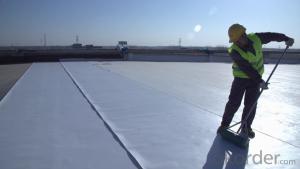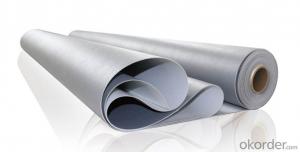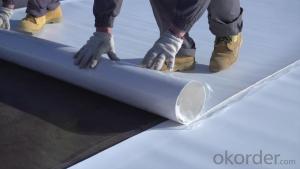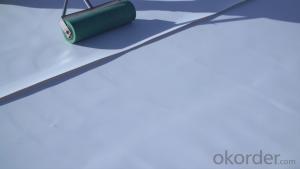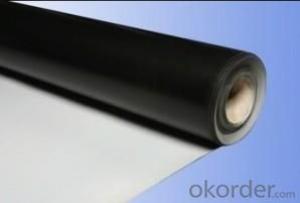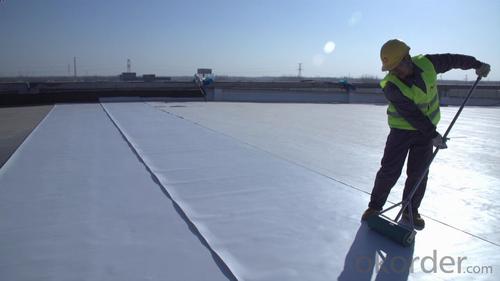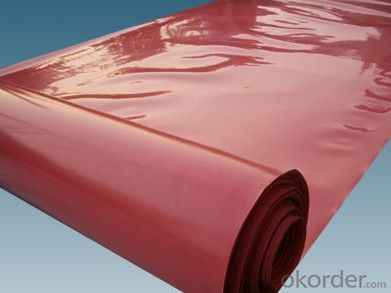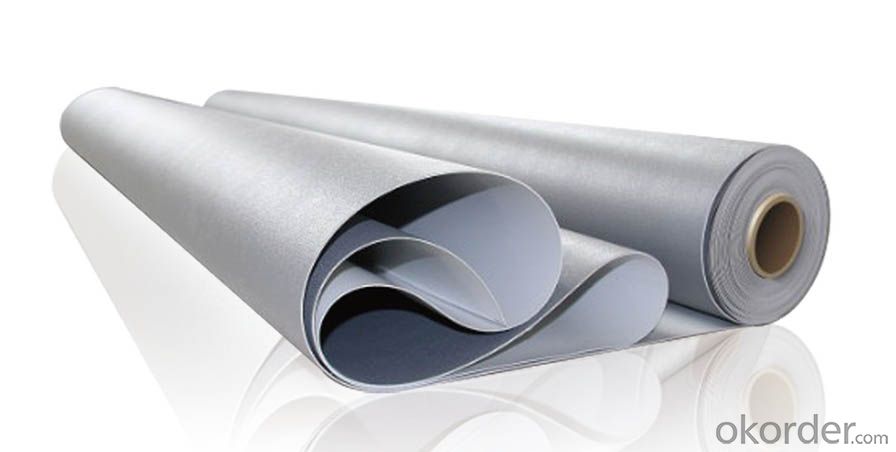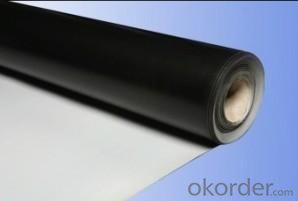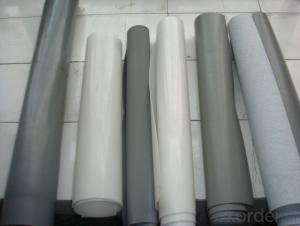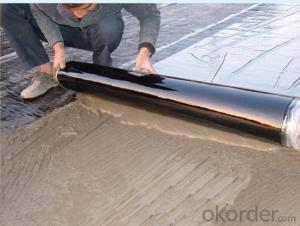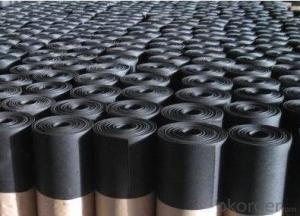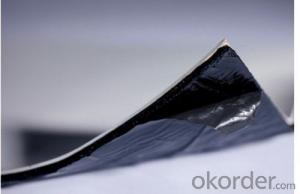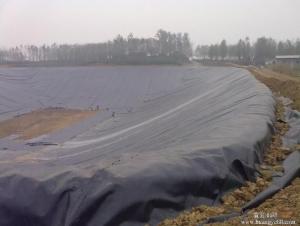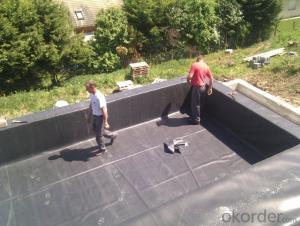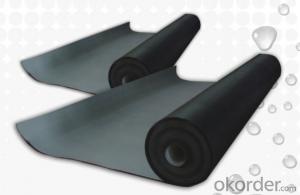EPDM Waterproof Membrane for Roofing Market
- Loading Port:
- Qingdao
- Payment Terms:
- TT or LC
- Min Order Qty:
- 20000 m²
- Supply Capability:
- 600000 m²/month
OKorder Service Pledge
OKorder Financial Service
You Might Also Like
Description Of EPDM Waterproof Membrane for Roofing Market:
--EPDM waterproof membrane is made from ternary ethylene-propylene rubber, which is for waterproofing of exposed and non-exposed applications.
--EPDM waterproof membrane production adopts the world-advanced equipment of cold feeding extrusion and continuous vulcanization technology.
--EPDM waterproof membrane is of high elasticity among high polymer waterproof materials and becomes a world-popular waterproofing material.
Main Features of EPDM Waterproof Membrane for Roofing Market:
--Excellent physical and mechanical performance
--High tearing resistance
--Good deformation adaptability
--High puncture resistance
--High aging resistance
--UV resistance
Application of EPDM Waterproof Membrane for Roofing Market:
--Roofs, Basement, Toilet
--Industrial and civil building waterproofing
--Geo-synthetic liner for swimming pool, channels, irrigation system
--Especially suit for projects with high requirements in durability, anti-corrosion and deformation
Technical Parameters of EPDM Waterproof Membrane for Roofing Market:
EPDM Waterproof Membrane ASTM Standard : D-7465 | ||||
Property | Test Method | Units | Mininum ASTM | |
D-7465 | ||||
Sl | Eng | |||
Specific Gravity | ASTM D-792 | gm/cc | 1.1 | 1.1 |
Unit Weight | ASTM D-751 | kg/m2 | 1.3 | 0.27 |
Thickness Type 1 | ASTM D-412 | mm(in) | 1.02 | 0.04 |
Tensile Strength. Die C | ASTM D-412 | Mpa(psi) | 9 | 1305 |
Ultimate Elongation,Die C | ASTM D-412 | % | 300 | 300 |
Tear Resistance,Die C | ASTM D-624 | Kn/m(lbf/in) | 26.27 | 150 |
Puncture Resistance | ASTM D-4833 | N(lbs) | 133 | 30 |
Shore A Durometer | ASTM D-2240 | 65-10 | 65-10 | |
Ozone Resistance | ASTM D-1149 | No Crack | No Crack | |
Multiaxial Elongation | ASTM D-5617 | % | 100 | 100 |
Heat Aging 28 days at 240 degrees | ASTM D-573 | |||
Tensile Strength, Die C | ASTM D-412 | MPa(psi) | 8.3 | 1205 |
Ultimate elongation, Die C | ASTM D-412 | % | 200 | 200 |
Tear Resistance, Die C | ASTM-624 | Kn/m(lbf/in) | 21.9 | 125 |
Accelerated Aging Xenon Arc | ASTM G-155/G-151 | Pass | Pass | |
Brittleness Point | ASTM D-2137 | -45 °C | -49 °C F | |
Water Absorption | ASTM D-471 | % | +8,-2 | +8,-2 |
Water Vapor Permeability, max | ASTM E-96 | Permils | 2.0 | 2.0 |
Linear Dimensional Change,max | ASTM-D-1204 | % | +/-1.0 | +/-1.0 |
Chronic Toxicity Screening | EPA/600/4-89/001 | Method 1000.0 | Pass | Pass |
FAQ:
1. What are we supplying?
We are specialized in producing Colorful Asphalt Roof Shingle, SBS/APP modified bitumen waterproof membrane, Self adhesive bitumen waterproof membrane, PVC waterproofing membrane, EPDM rubber roofing membrane, Single Component Polyurethane Waterproof Coating, and Spray Polyurea Waterproof Coating
2. What is your main market?
Our EPDM Waterproof Membrane for Roofing Industry sells very well in USA, United Kingdom, Austrilia, Canada, Japan, Pakistan, etc.
3. What is your advantage for EPDM Waterproof Membrane for Roofing Industry ?
With the most advanced production line, our good quality is based on superior material imported from America.
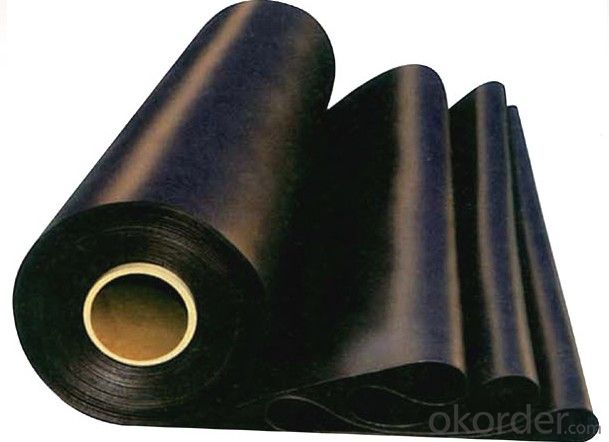
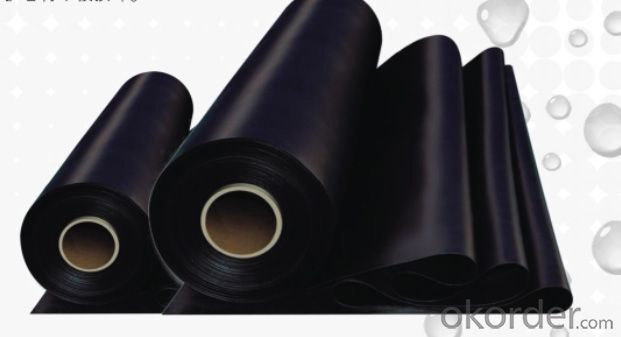
- Q: Can a waterproofing membrane be applied to both interior and exterior surfaces?
- Both interior and exterior surfaces can benefit from the application of a waterproofing membrane. Its main objective is to safeguard against water infiltration and shield the underlying surfaces. Regardless of whether it is used indoors or outdoors, the membrane serves the same purpose of establishing a barrier against moisture. Basements and crawl spaces commonly utilize interior waterproofing membranes to prevent water from seeping into the building interior. On the other hand, exterior waterproofing membranes are typically applied to the outside walls and foundations to guard against water penetration from rain, groundwater, and other external sources. Both types of membranes are engineered to be long-lasting, adaptable, and water-resistant, ensuring the durability and structural soundness of the surfaces they are applied to.
- Q: Can a waterproofing membrane be used for elevator shafts?
- Yes, a waterproofing membrane can be used for elevator shafts. Elevator shafts can be susceptible to water infiltration, especially in locations with high water table or prone to flooding. A waterproofing membrane acts as a protective barrier against water penetration, helping to prevent damage to the elevator shaft and its components. It is an effective solution to ensure the longevity and proper functioning of elevator systems in such conditions.
- Q: Can a waterproofing membrane be used for a retaining wall?
- Yes, a waterproofing membrane can be used for a retaining wall.
- Q: Can waterproofing membranes be used on rooftop terraces?
- Indeed, rooftop terraces can utilize waterproofing membranes. In fact, they are frequently employed to safeguard the terrace's structural integrity and prevent water damage to the underlying structure. Rooftop terraces are exposed to diverse weather conditions, encompassing rain, snow, and UV rays, which can result in leaks and deterioration. Waterproofing membranes function as a barrier, impeding water from permeating the surface and causing harm. These membranes are specifically engineered for outdoor usage and can endure the harsh conditions commonly encountered on rooftops. They are obtainable in various materials, such as modified bitumen, EPDM (ethylene propylene diene terpolymer), and PVC (polyvinyl chloride), allowing for flexibility in selecting the most suitable option for a specific terrace. Moreover, waterproofing membranes can be installed beneath a variety of terrace finishes, including pavers, tiles, and decking, offering a versatile solution for diverse design preferences. Overall, it is highly advisable to employ waterproofing membranes for rooftop terraces to ensure their longevity, durability, and resistance to water-related problems.
- Q: Can a waterproofing membrane be used for a retaining wall drainage?
- Yes, a waterproofing membrane can be used for retaining wall drainage. A waterproofing membrane is typically used to prevent water from penetrating through a structure, such as a basement or foundation. However, it can also be used in the construction of retaining walls to provide a barrier against water seepage. Retaining walls are designed to hold back soil and prevent erosion, but they can be susceptible to water damage if not properly constructed. Water seepage can cause pressure build-up behind the wall, leading to structural issues over time. By installing a waterproofing membrane on the backside of the retaining wall, it acts as a barrier to prevent water from infiltrating the soil and accumulating behind the wall. In addition to preventing water seepage, a waterproofing membrane can also aid in the drainage of water away from the retaining wall. By incorporating drainage systems, such as weep holes or French drains, in conjunction with the membrane, water can be directed away from the wall, reducing hydrostatic pressure and potential damage. It is important to note that while a waterproofing membrane can be used for retaining wall drainage, it is crucial to ensure proper installation and compatibility with the specific retaining wall system and conditions. Consulting with a professional engineer or contractor experienced in the construction of retaining walls is recommended to ensure the best approach for your specific project.
- Q: Can a waterproofing membrane be used in conjunction with insulation materials?
- Using both insulation materials and a waterproofing membrane together is often recommended in order to protect buildings from moisture and improve energy efficiency. The waterproofing membrane acts as a barrier against water infiltration, while the insulation materials help regulate temperature and minimize heat loss or gain. By combining these components, the building envelope can effectively shield against water damage and maintain a comfortable indoor environment. Proper installation and compatibility between the waterproofing membrane and insulation materials are crucial for achieving optimal performance and long-lasting results.
- Q: Can a waterproofing membrane be used on interior walls?
- Interior walls can indeed benefit from the use of a waterproofing membrane. These membranes are specifically designed to create a barrier against moisture, thus preventing any water from seeping into the surface and causing damage. Although their primary use is to protect exterior walls from rain and groundwater, they can also be employed on interior walls that are susceptible to moisture, such as bathrooms, kitchens, or basements. By applying a waterproofing membrane, you can effectively shield the interior walls against water damage, the growth of mold, and other issues related to moisture. However, it is crucial to keep in mind that the choice of the appropriate type of waterproofing membrane and the correct installation technique should be based on the specific requirements and conditions of the interior walls. To ensure proper application and long-lasting protection, it is highly recommended to seek the advice of a professional or follow the guidelines provided by the manufacturer.
- Q: Can a waterproofing membrane be used on bridge decks?
- Yes, a waterproofing membrane can be used on bridge decks. Bridge decks are exposed to various weather conditions, including rain, snow, and ice, which can cause damage over time. Applying a waterproofing membrane on bridge decks can help to protect the concrete from moisture penetration, preventing deterioration and extending the lifespan of the bridge. Additionally, the waterproofing membrane serves as a barrier against chloride ions, which can accelerate the corrosion of reinforcing steel in the bridge deck. Therefore, using a waterproofing membrane on bridge decks is a common practice in bridge construction and maintenance to ensure their durability and longevity.
- Q: Are waterproofing membranes resistant to hydrostatic pressure?
- Waterproofing membranes have been specifically developed to resist hydrostatic pressure, which is the pressure exerted by still water. When a building is exposed to ground water, such as in basements or foundations, hydrostatic pressure becomes a significant concern as it can lead to water seeping through walls and floors. To prevent water from penetrating the building structure, waterproofing membranes are engineered to withstand and resist the pressure exerted by water. These membranes are typically made from materials like bitumen, rubberized asphalt, or synthetic polymers, all of which possess excellent water resistance properties. Moreover, the purpose of waterproofing membranes is to create an uninterrupted barrier against water, effectively preventing any potential leaks or seepage. They are applied in multiple layers, ensuring a sturdy and long-lasting barrier that can withstand the high pressure of water. It is crucial to note that the effectiveness of the waterproofing membrane in resisting hydrostatic pressure may vary depending on its type and quality. Hence, it is essential to choose a high-quality membrane and ensure proper installation to maximize its ability to resist hydrostatic pressure.
- Q: Are there any specific considerations for installing a waterproofing membrane on sloped surfaces?
- Yes, there are specific considerations for installing a waterproofing membrane on sloped surfaces. One important consideration is the slope gradient, as steeper slopes may require additional measures to ensure proper adhesion and prevent water pooling. Another consideration is the type of waterproofing membrane used, as some membranes may be better suited for sloped surfaces to provide adequate drainage and prevent water penetration. Additionally, proper surface preparation and installation techniques are crucial to ensure the membrane is properly applied and can withstand the stresses of a sloped surface.
Send your message to us
EPDM Waterproof Membrane for Roofing Market
- Loading Port:
- Qingdao
- Payment Terms:
- TT or LC
- Min Order Qty:
- 20000 m²
- Supply Capability:
- 600000 m²/month
OKorder Service Pledge
OKorder Financial Service
Similar products
Hot products
Hot Searches
Related keywords
